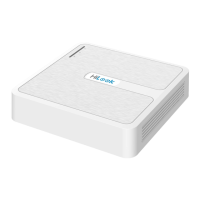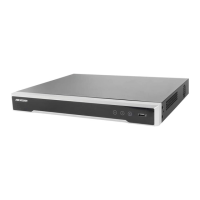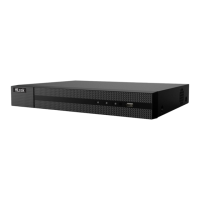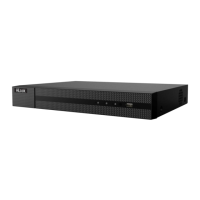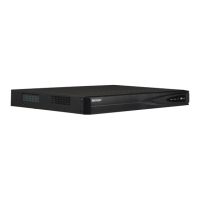User Manual of Network Video Recorder
151
Dual-NIC configuration is only applicable for DS-9600NI-ST/RT/XT and DS-8600NI-ST series NVR.
3. In the General Settings interface, you can configure the following settings: Working Mode, NIC Type, IPv4
Address, IPv4 Gateway, MTU and DNS Server.
If the DHCP server is available, you can click the checkbox of DHCP to automatically obtain an IP address
and other network settings from that server.
For the 7600/7700NI-SP series NVR, you need to configure the internal NIC address, so that IP
addresses are assigned to the cameras connected to the PoE interfaces.
The valid value range of MTU is 500 ~ 9676.
4. After having configured the general settings, click Apply button to save the settings.
Working Mode
There are two 10M/100M/1000M NIC cards provided by the 9600NI-ST/RT/XT series device, and it allows the
device to work in the Multi-address, Load Balance and Net-fault Tolerance modes.
Multi-address Mode: The parameters of the two NIC cards can be configured independently. You can select
LAN1 or LAN2 in the NIC type field for parameter settings.
You can select one NIC card as default route. And then the system is connecting with the extranet the data will be
forwarded through the default route.
Net-fault Tolerance Mode: The two NIC cards use the same IP address, and you can select the Main NIC to
LAN1 or LAN2. By this way, in case of one NIC card failure, the device will automatically enable the other
standby NIC card so as to ensure the normal running of the whole system.
Load Balance Mode: By using the same IP address and two NIC cards share the load of the total bandwidth,
which enables the system to provide two Gigabit network capacity.
Figure 9. 2 Net Fault-tolerance Working Mode

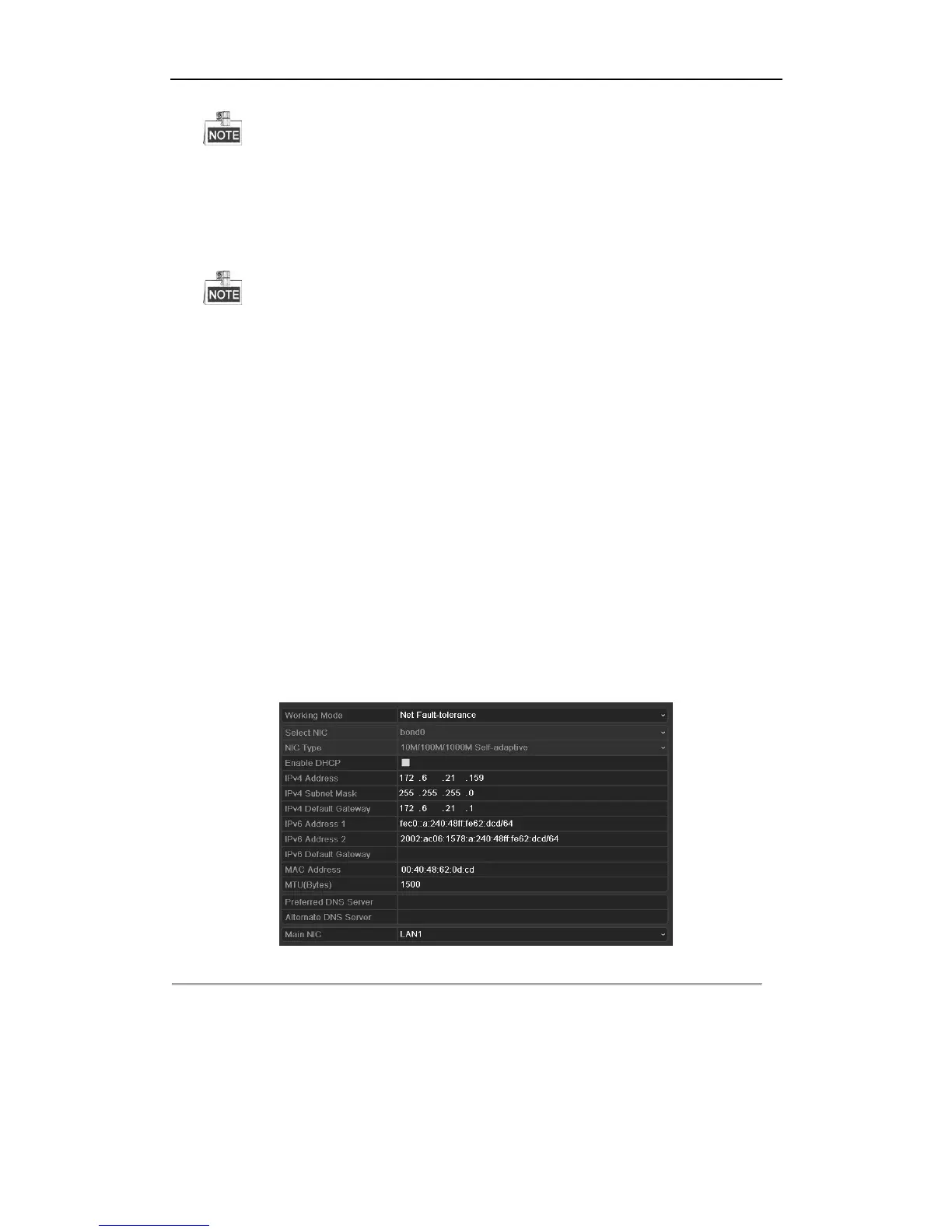